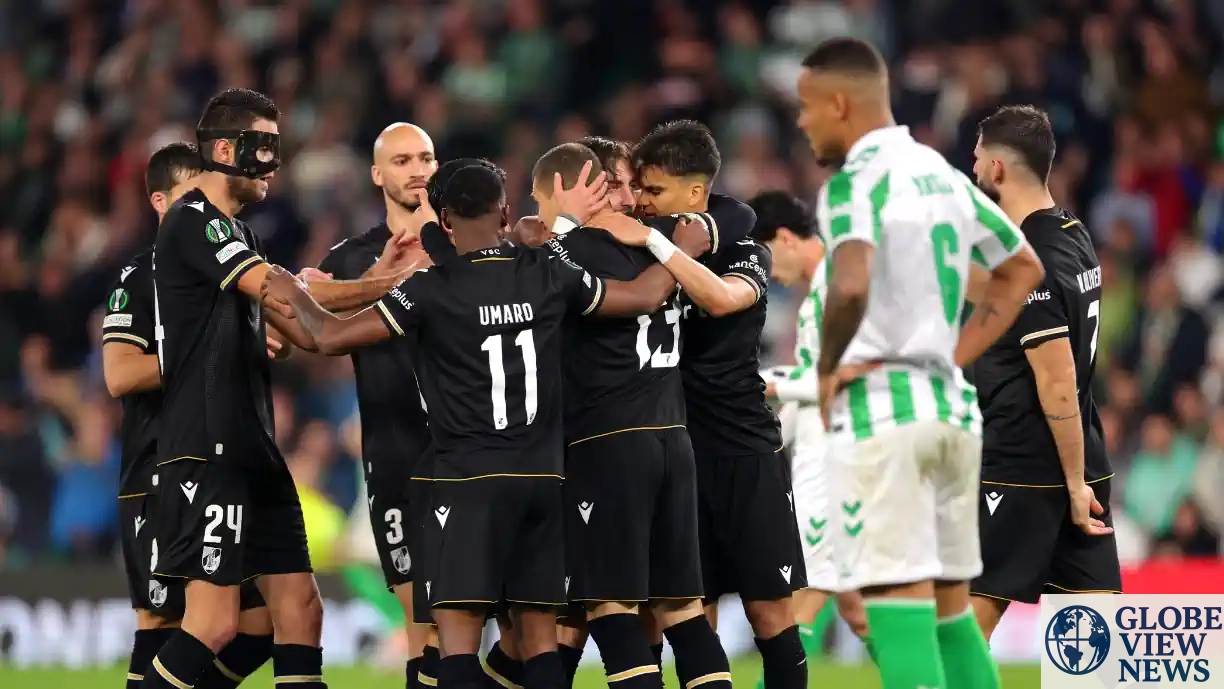The footballing clash between Betis – Guimarães has garnered attention for its compelling narrative, competitive edge, and the convergence of two vibrant footballing cultures. Real Betis, hailing from Seville, Spain, represents La Liga’s flair and tactical evolution, while Vitória de Guimarães, from Portugal’s Primeira Liga, symbolizes resilience and raw ambition. This fixture is more than a mere international friendly or European qualifier—it’s a meeting of heritage, strategy, and fervent fanbases.
The following article delves into the historical backgrounds of both clubs, their recent trajectories, key players, and the tactical dynamics that have defined this face-off. The Betis – Guimarães fixture provides a fascinating lens through which to examine modern football, bridging the Iberian divide in both culture and technique.
Founded in 1907, Real Betis Balompié is one of Spain’s oldest football institutions. With deep roots in Andalusia, Betis has always been more than just a football club—it represents a social and political identity for many Sevillanos. The club’s highs and lows, including a La Liga title in 1935 and several relegations, showcase a rollercoaster journey punctuated by unwavering fan support.
Vitória de Guimarães, established in 1922, may not boast the same trophy cabinet as Betis, but it is no less significant in Portuguese football. Known as the “Conquistadores,” Guimarães embodies the spirit of a city often considered the birthplace of Portugal. The club has consistently punched above its weight, producing notable talents and often challenging the traditional dominance of Benfica, Porto, and Sporting.
The Betis – Guimarães encounter brings these two legacies head-to-head, evoking not just sporting rivalries but the pride of two regions with deep footballing DNA.
In recent seasons, both teams have demonstrated a commitment to progressive football. Real Betis, under the stewardship of Chilean manager Manuel Pellegrini, has embraced a possession-based game focused on fluid midfield play and attacking full-backs. Betis’s ability to balance La Liga responsibilities while competing in European tournaments has been commendable, especially given their relatively limited budget compared to Spanish giants.
On the other hand, Vitória de Guimarães has been steadily climbing the ranks in Portugal. Under capable management, they’ve focused on youth development and smart acquisitions. With frequent appearances in UEFA competitions, Guimarães has solidified its position as one of Portugal’s most competitive mid-tier clubs.
As such, a Betis – Guimarães fixture becomes a true test of style, form, and substance. It pits Spanish technical finesse against Portuguese tactical rigidity and counterattacking sharpness.
Betis typically lines up in a 4-2-3-1 formation, with a heavy emphasis on ball control and width. The double pivot in midfield offers protection while enabling transitions, allowing attacking midfielders and overlapping full-backs to create numerical superiority in wide areas.
Midfield Dominance: Anchored by experienced players like Guido Rodríguez, Betis thrives in dictating tempo.
Creative Freedom: Nabil Fekir and Sergio Canales have been pivotal in providing vision and flair in the final third.
High Line Defense: Betis commits men forward but is vulnerable to quick transitions, something Guimarães would look to exploit.
Guimarães often prefers a compact 4-3-3 or 4-4-2 system, focusing on structure and quick transitions. Their ability to remain disciplined without the ball while springing fast counters has earned them several upset wins domestically.
Compact Midfield Block: Limiting space between the lines makes it difficult for opponents to penetrate centrally.
Explosive Wingers: Players like Jota Silva and André Silva provide width and cutting runs.
Set Piece Strength: Aerial prowess and organized routines make them dangerous from corners and free-kicks.
In a Betis – Guimarães scenario, both teams’ contrasting styles create an unpredictable and exciting tactical battle.
Nabil Fekir: The former Lyon maestro is Betis’s creative heartbeat. His ability to dribble, shoot from distance, and unlock defenses makes him a constant threat.
Borja Iglesias: The “Panda” is a clinical finisher who thrives off intelligent service from the wings and midfield.
Álex Moreno: One of the best left-backs in La Liga before his transfer to Aston Villa, his overlapping runs and defensive work are still missed.
André Silva: The Portuguese striker has been instrumental in leading the line with intelligence and precision.
Tomas Händel: A midfield dynamo with an eye for a pass, he provides balance and energy.
Jorge Fernandes: The defensive stalwart keeps things organized at the back and is a leader in high-pressure scenarios.
Each player’s performance in a Betis – Guimarães matchup could tip the scales in their team’s favor.
Both Betis and Guimarães boast passionate, loyal, and vocal supporters. Estadio Benito Villamarín, Betis’s home ground, is famous for its electrifying atmosphere, complete with coordinated chants and green-and-white flags. The “Beticos” are known for unwavering support, even during tough seasons.
Guimarães fans, meanwhile, are among the most dedicated in Portugal. The D. Afonso Henriques Stadium is a cauldron of noise, and matches are often intense, both on and off the pitch. Their support isn’t just vocal but visual, with tifos and displays that energize the players.
When Betis – Guimarães is played, whether in Spain or Portugal, the match environment is charged with emotion and energy that enhances the experience for players and fans alike.
Although Betis has a stronger track record in Europe, Guimarães has had memorable moments as well. For both teams, fixtures like Betis – Guimarães are important not only for immediate results but also for UEFA coefficient points, financial incentives, and player exposure.
Winning such matches can have ripple effects: qualifying for group stages, attracting new sponsors, and retaining top talent. Moreover, European encounters between teams from Spain and Portugal always carry an added layer of competitive spirit, akin to a derby given their geographic and cultural proximity.
In this light, Betis – Guimarães takes on strategic importance for both clubs’ continental aspirations.
Betis and Guimarães invest heavily in youth development. Real Betis has produced notable talents through its academy, including Dani Ceballos and Fabián Ruiz. Their focus on local development has allowed them to remain competitive even in financially lean years.
Guimarães too has emerged as a reliable talent factory. Portuguese football has long prioritized youth, and Guimarães is no exception. They’ve nurtured players who’ve gone on to play in the Premier League, La Liga, and Serie A.
The Betis – Guimarães fixture thus not only showcases current talent but offers a glimpse into the future stars of European football.
Analyzing data from recent seasons offers deeper insight into what fans can expect from a Betis – Guimarães encounter:
Betis averages 58–62% possession per game, indicating a control-heavy approach.
Guimarães completes more long balls and fewer short passes, highlighting their transitional focus.
Set pieces account for 32% of Guimarães’s goals, whereas Betis relies more on open play.
Expected Goals (xG) metrics favor Betis due to their volume of high-quality chances created through intricate build-up play.
These trends underline the philosophical and practical differences in playstyles, making the Betis – Guimarães match-up a chess match on grass.
The globalization of football means that a fixture like Betis – Guimarães is not just watched locally but streamed worldwide. Fans from Latin America, Asia, and Africa tune in via broadcasters and digital platforms. This has enhanced the profile of both clubs and brought in new commercial opportunities.
Streaming platforms, including DAZN and FuboTV, often carry these matches, expanding accessibility and deepening international fanbases. For many viewers, such cross-border fixtures offer a welcome alternative to predictable top-tier matchups.
In summation, the encounter is more than a sporting event—it’s a tapestry of tradition, tactics, talent, and tenacity. The Spanish and Portuguese football cultures, though similar in passion, diverge in execution. When these two sides meet, it encapsulates the beauty of the European game—where any match can offer surprise, drama, and brilliance.
As football continues to evolve amid commercial pressures and digital revolutions, fixtures like Betis – Guimarães remind us of the essence of the sport: rivalry, identity, and the relentless pursuit of excellence.
Whether you are a football purist, a casual fan, or an analyst seeking tactical depth, this match-up offers a rich narrative. As both clubs continue to develop and compete on broader stages, their meetings could soon become staples of European competition lore.

